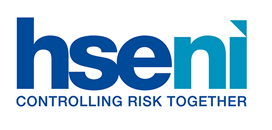New and revised Workplace Exposure Limits (WELs) for thirty one substances listed in the European Commission’s 4th Directive on Indicative Occupational Exposure Limit Values (IOELVs) have been published.

WELs are set to help employers meet their legal responsibilities under the Control of Substances Hazardous to Health Regulations (Northern Ireland) 2003 (S.R. 2003 No. 34), as amended, which require employers to prevent, or if this is not reasonably practicable, to adequately control, their employees exposure to hazardous substances.
The new WELs are published in the Health and Safety Executive publication “EH40/2005 Workplace exposure limits” available on the Great Britain Health and Safety Executive website and the HSENI website at https://www.hseni.gov.uk/publications/eh402005-workplace-exposure-limits and came into force, in Northern Ireland, on 14 September 2018. The Health and Safety Executive publication “EH40/2005 Workplace exposure limits” is approved for use in Northern Ireland.
In the UK IOELVs are transposed as workplace exposure limits (WELs) and short term exposure limits (STELs). A WEL is defined as the concentration of a hazardous substance in the air that people breathe, averaged over a specified reference period referred to as a time-weighted average. Two periods are used: long-term exposure limit is 8 hours and STEL is 15 minutes.
Details of the changes can be summarised as follows:
There were new entries for the following substances:
- 2-ethylhexan-1-ol
- Acetic acid
- Acrylic acid
- Amitrole
- But-2-yne-1,4-diol
- Diacetyl
- Glycerol trinitrate
- Methyl formate
- Nitroethane
- Nitrogen dioxide
- Nitrogen monoxide
- Sulphur dioxide
- Hydrogenated terphenyl
- Tetraethyl orthosilicate
New 8-hour time-weighted averages (TWAs) were introduced for:
- 2-ethylhexan-1-ol
- Amitrole
- But-2yne-1,4-diol
- Calcium dihydroxide (respirable fraction)
- Calcium oxide (respirable fraction)
- Hydrogen cyanide (as cyanide)
- Nitrogen monoxide
- Tetraethyl orthosilicate
New 8-hour TWA and short-term exposure limits (STELs) were introduced for the following substances:
- Acetic acid
- Acrylic acid
- Diacetyl
- Glycerol trinitrate
- Methyl formate
- Nitrogen dioxide
- Sulphur dioxide
- Hydrogenated terphenyl
New skin notations have been added for the following substances:
- 1,4-dichlorobenzene
- Glycerol trinitrate
- Methyl formate
- Tetrachloroethylene
The following substances required reductions to the existing WELs:
- 1,4-Dichlorobenzene
- Acrolein
- Bisphenol A
- Carbon monoxide
- Carbon tetrachloride
- Manganese and inorganic manganese compounds
- Methylene chloride (dichloromethane)
- Potassium cyanide (as cyanide)
- Sodium cyanide
- Tetrachloroethylene
- Vinylidene chloride
A STEL was introduced for:
- Acetic acid
- Acrylic acid
- Calcium dihydroxide
- Calcium oxide
- Carbon tetrachloride
- Diacetyl
- Diphenyl ether
- Glycerol trinitrate
- Lithium hydride
- Manganese and inorganic manganese compounds
- Methyl formate
- Nitroethane
- Nitrogen dioxide
- Potassium cyanide (as cyanide)
- Sodium cyanide (as cyanide)
- Sulphur dioxide
- Hydrogenated terphenyl
- Vinylidene chloride
The existing 8-hour TWA WEL was removed and the IOELV STEL was adopted for:
- Lithium hydride
Transitional arrangements
The European Commission recognises that there may be technological challenges and associated costs for the underground mining and tunnelling industries across Europe in complying with the proposed limit values for nitrogen monoxide, nitrogen dioxide and carbon monoxide. In recognition of the challenges in these industries the Directive includes an extended transitional period until 21 August 2023 during which Member States may apply national limit values for these three substances in these industries.
During the transitional period, limits for the underground mining and tunnelling industries will be as follows. For nitrogen monoxide a WEL of 30 mg.m3 (25 ppm) as an 8-hour TWA will be used. For carbon monoxide WELs of 35 mg.m3 (30 ppm) as an 8-hour TWA, and 232 mg.m3 (200 ppm) short term (15 minute TWA) are to be used.
These values will remain in place until the end of the 5-year extended transitional period (21 August 2023), when the lower value of 2.5 mg.m3 (2 ppm) for nitrogen monoxide, 0.96 mg.m3 (0.5 ppm) and 1.91 mg.m3 (1 ppm) for nitrogen dioxide and 23 mg.m3 (20 ppm) and 117 mg.m3 (100 ppm) for carbon monoxide will be applied.
Latest news
- Urgent - Farmers be aware! Recent near miss with slurry gas 23 April 2024
- Latest chemicals news for Northern Ireland - updated 22 April 2024 22 April 2024
- Dungannon company and driver fined following death of employee 10 April 2024
- Council and construction company fined following death of 24-year-old worker during Storm-Ali 26 March 2024
